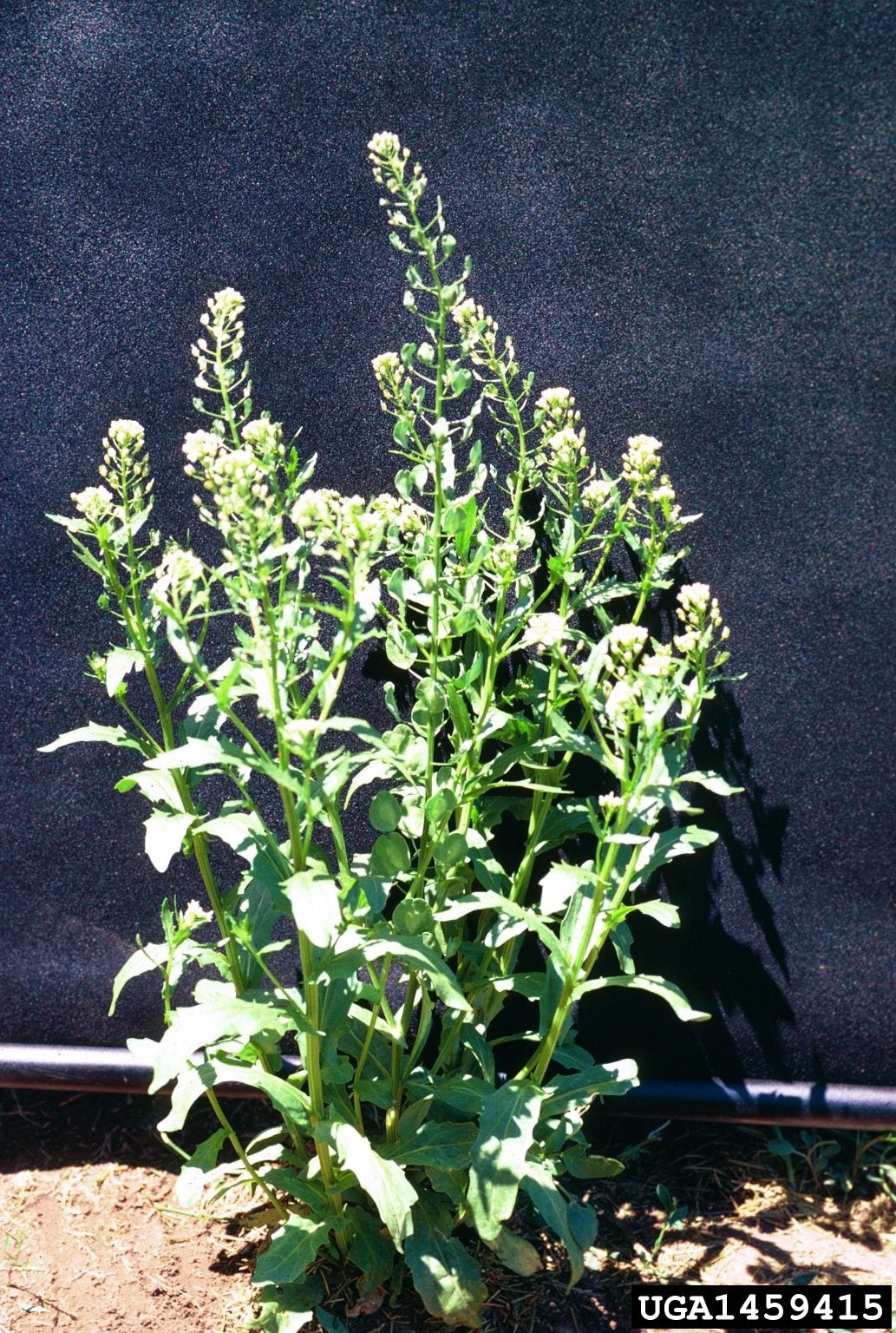What Is Stinkweed. Learn How To Kill Stinkweed Plants
Stinkweed is a smelly lawn weed with an odor similar to rotten garlic with a hint of turnip. It can take over your yard if you don't start a management program early in the season.


Stinkweed (Thlaspi arvense), also known as field pennygrass, is an unsavory lawn weed with an odor similar to rotten garlic or turnip. It can grow 2 to 3 feet tall (61-91 cm) and take over your yard if you don’t start a management program early in the season.
What is Stinkweed?
There are two types of stinkweed, and both are annuals. One begins growing in spring and can be a problem throughout summer. The other grows in fall and winter. Management for both weeds is the same.
Stinkweed plants begin as a low rosette of leaves. Stems grow from the center of the rosette and eventually support branches topped with clusters of small, white flowers.
Flat, winged seed pods form after the flowers fade. Each plant can produce 15,000 to 20,000 seeds that remain alive and viable in the soil for up to 20 years. It’s easy to see the importance of getting rid of stinkweed before the plants go to seed.
How to Kill Stinkweed Gardens
Broad-spectrum herbicides are generally not safe to use unless you can find a good, organic version. Your best option is to pull up the weed. Fortunately, it’s not hard to pull up stinkweed.
Use a hoe if bending and stooping are hard on your back and knees. Wear gloves to protect your hands from the nasty smell and discard the weeds when you are through pulling.
Getting Rid of Stinkweed in the Lawn
Growing a strong, healthy lawn crowds out and discourages stinkweed. Follow a fertilization program recommended for the type of turf grass you’re growing and your geographical area. A local garden center can help you select the right products and develop a schedule.
Gardening tips, videos, info and more delivered right to your inbox!
Sign up for the Gardening Know How newsletter today and receive a free copy of our e-book "How to Grow Delicious Tomatoes".
Water weekly in the absence of rain and mow the lawn regularly to cut down the weeds before they flower. Most experts recommend mowing often enough that you never have to remove more than one-third of the length of the grass blade each time you mow. This should be enough to prevent flowers and seedpod formation.

Jackie Carroll has written over 500 articles for Gardening Know How on a wide range of topics.
-
 Zinnias On Repeat: 10 Glorious Cut-And-Come-Again Varieties For Endless Summer Bouquets
Zinnias On Repeat: 10 Glorious Cut-And-Come-Again Varieties For Endless Summer BouquetsThese zinnia varieties keep giving all summer, making them the perfect choice for dedicated cutting gardens – or just the occasional homegrown bouquet.
By Ellen Wells
-
 Create A Romantic Garden Straight Out Of Bridgerton: Regency Era Romance In Your Garden
Create A Romantic Garden Straight Out Of Bridgerton: Regency Era Romance In Your GardenTry some romantic garden ideas straight out of Bridgerton. Flowers and gardens in the Regency era were lush and charming and you can get the same look!
By Bonnie L. Grant